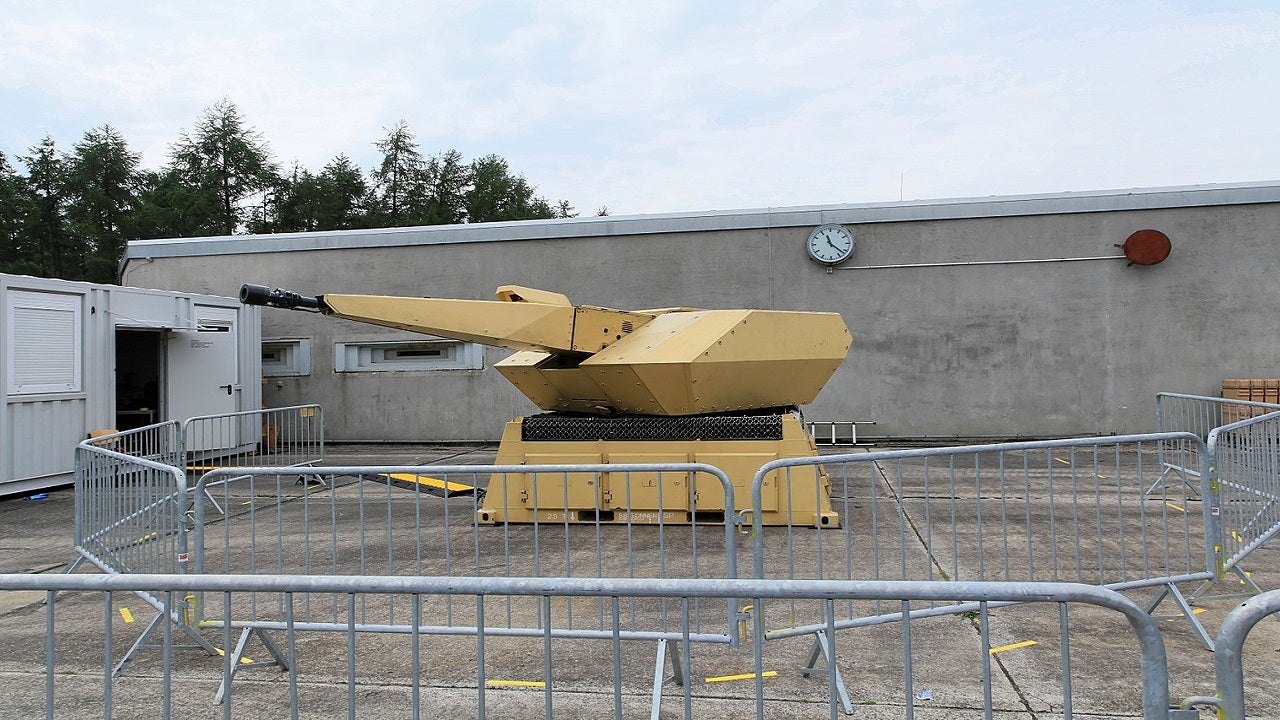Nächstbereichschutzsystem (NBS) MANTIS is a very short-range air defence protection system developed for protecting the forward-operating bases of the German Army in Afghanistan. Formerly known as NBS C-RAM (counter-rocket, artillery and mortar), the 35mm fully automated air defence system has been developed by Rheinmetall Air Defence (Rheinmetall) for the German Bundeswehr.
The NBS MANTIS short-range force protection system is designed to detect, track and shoot the projectiles within a close range of the target base. The MANTIS represents an important part of the Bundeswehr Army’s comprehensive future SysFla air-defence programme.
NBS MANTIS SHORAD orders and deliveries
The German Government placed a €110.8m order two NBS systems for Bundeswehr from Rheinmetall in May 2009. Rheinmetall also has an option for documentation and training services of about €20m. The company supplied the ammunition for the protection systems under a follow-on contract worth around €13.4m.
The NBS MANTIS systems were delivered to the German Army was in 2011. The German Air Force took formal delivery of the MANTIS air defence system in November 2012.
The phase-out of the Roland and Gepard mobile air defence systems leaves the Bundeswehr with very limited capabilities in the field of short-to very short-range air defence or SHORAD.
The lightweight air protection system of Rheinmetall guarantees that this technology can be retained until 2025.
As an established SHORAD provider, Rheinmetall’s plan calls for a range of automatic cannon and guided missiles and, in the immediate future, expanded high-energy laser weapons.
NBS MANTIS air defence protection system development
The Bundeswehr did not have weapon systems to tackle the intercepting small incoming projectiles. The army bases in Masar-I-Sharif and Kunduz were under several attacks by insurgents.The German Bundeswehr placed a €48m contract to Rheinmetall Air Defence
(formerly Oerlikon Contraves) to develop the NBS C-RAM close-range protection system in March 2007.
The NBS MANTIS system is based on the Skyshield air defence gun system of Rheinmetall. The Skyshield is a modular ground-based short-range air defence system (SHORAD) designed with automated and flexible features, and is easily transportable.
The NBS MANTIS was developed in 12 months on behalf of the German Federal Office of Defence Technology and Procurement. It was successfully live fire tested in real-time operating conditions in Turkey in summer 2008.
The Nächstbereichschutzsystem MANTIS is specifically designed to defend the forward-operating bases and protect other vulnerable military installations from rocket, artillery and mortar attacks.
The first fully functional NBS unit was handed over to the German Luftwaffe in January 2010. It was deployed to protect the German Army’s forward-operating bases in Afghanistan in 2011. The second system was used to train the maintenance staff on the system operations.
NBS MANTIS anti-aircraft guns
The NBS MANTIS is equipped with six 35mm automatic guns, two sensor units and a central command ground-control unit.
The sensor system comprises of radar, effectors and electro-optical sensors installed on the base perimeter. The MANTIS protection system is totally automated and operates 24/7. A radar sensor in the control system recognises missiles fired onto a base from about 3km. The automatic process enables the guns to fire on the threat instantly in the calculated flight path. The guns are capable of firing 1,000 rounds per minute.
The firing of the guns is based on mission-specific programmable and air burst advanced hit efficiency and destruction (AHEAD) ammunition, a technology developed by Rheinmetall Weapons and Munitions, formerly Oerlikon Contraves Pyrotec. The ammunition has a payload of 152 tungsten projectiles, weighing 3.3g each.
The AHEAD technology enables the air defence gun’s capability to track and destroy the aerial targets. The MANTIS gun fires 24 round burst, high-velocity AHEAD rounds at the target’s intercept point.
The projectiles from the gun are programmed through a muzzle-based electromagnetic inductor. The technology activates and separates the projectiles into 152 heavy tungsten metal spin-stabilised sub-projectiles as per an electronic timer.
The sub-projectiles of 3.3g each form a lethal cone-shaped metal cloud in the flight path of the incoming target. The response time for the system to detect and fire the target is expected to be 4.5 seconds. MANTIS’ control system is also capable of tracking the location of the assailants along with the flight path and point of impact.
The high-performance 35mm revolver gun with AHEAD air-burst ammunition can also be integrated in several air defence systems, including the Skyshield. The guns have been employed in successful operations in NATO countries since 1996.




